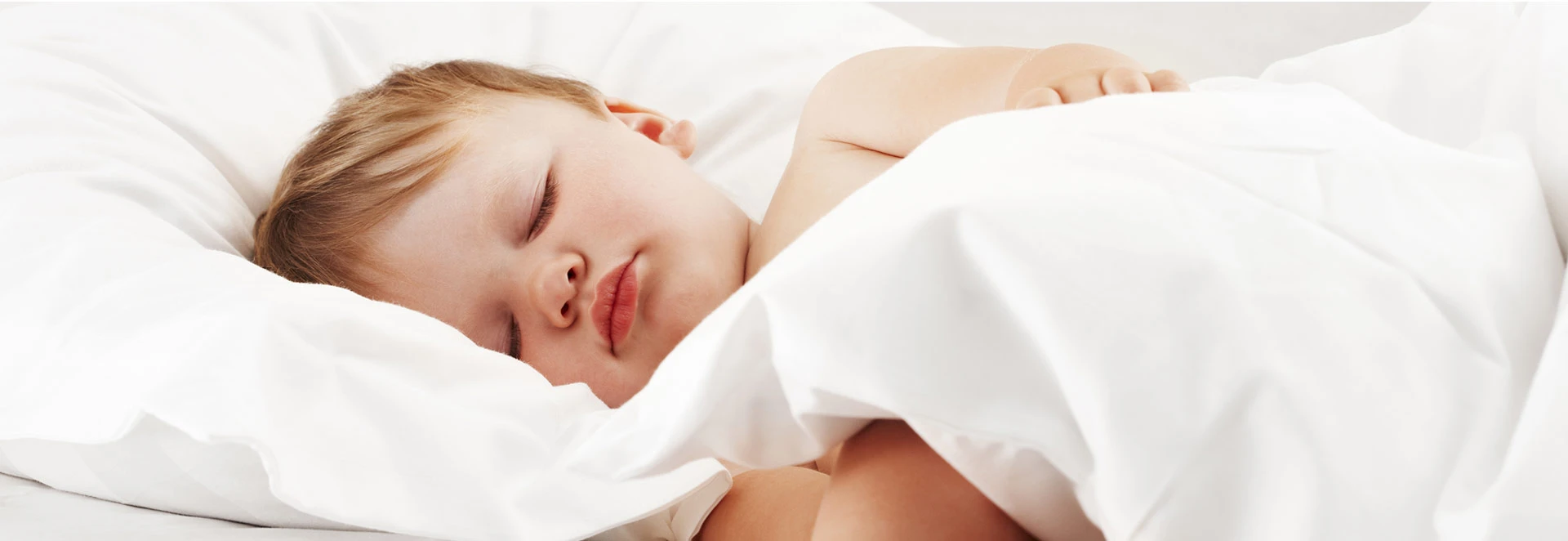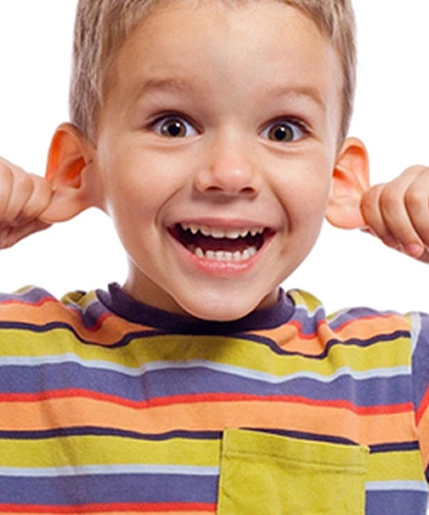Pediatric
Obstructive Sleep Apnea
The premiere symptom of sleep-disordered breathing is snoring that is loud, present every night (regardless of sleep position), and is ultimately interrupted by gasping and snorting noises. Approximately 10% of children are reported to snore, but only 1% have obstructive sleep apnea.
When an individual, young or old, obstructs breathing during sleep, the body perceives this as a choking phenomenon. That person will experience a reduced heart rate and increase in blood pressure, which leads to brain arousal and sleep disruption. In most cases a child’s system can tolerate the changes in blood pressure and heart rate. However, a child’s brain does not tolerate the repeated interruptions to sleep. This means that your child will be sleep deprived despite your efforts to provide him/her with plenty of hours to rest. They may exhibit behaviors such as crankiness, temper tantrums, or be generally ill-behaved.
Consequences Of
Untreated Pediatric Sleep-Disordered Breathing (SDB)

SNORING
A problem if a child shares a room with a sibling and during sleepovers. Sleep deprivation: The child may become moody, inattentive, and disruptive both at home and at school. Classroom and athletic performance may decrease along with overall happiness. The child will lack energy, often preferring to sit in front of the television rather than participate in school and other activities. This may contribute to obesity.

ABNORMAL URINE PRODUCTION
SDB also causes increased nighttime urine production, and in children, this may lead to bedwetting.

GROWTH
Growth hormone is secreted at night. Those with SDB may suffer interruptions in hormone secretion, resulting in slow growth or development.

SLEEP DEPRIVATION
The child may become moody, inattentive, and disruptive both at home and at school. Classroom and athletic performance may decrease along with overall happiness. The child will lack energy, often preferring to sit in front of the television rather than participate in school and other activities. This may contribute to obesity.

ATTENTION DEFICIT DISORDER (ADD)/ATTENTION DEFICIT HYPERACTIVITY DISORDER (ADHD)
There are research findings that identify sleep-disordered breathing as a contributing factor to attention deficit disorders.

Diagnosis Of
Sleep-Disordered Breathing
The first diagnosis of sleep-disordered breathing in children is made by the parent’s observation of snoring. Other observations may include obstructions to breathing, gasping, snorting, and thrashing in bed, as well as unexplained bedwetting. Social symptoms are difficult to diagnose but include alteration in mood, misbehavior, and poor school performance. (Note: Every child who has sub-par academic and social skills may not have sleep apnea, but, if a child is a serious snorer and is experiencing mood, behavior, and performance problems, sleep-disordered breathing should be considered.)
The sleep test is the standard diagnostic test for sleep-disordered breathing. This test can be performed in a sleep laboratory or at home. Sleep tests can produce inaccurate results, especially in children. Borderline or normal sleep test results may still result in a diagnosis of sleep apnea based on parental observation and clinical evaluation.
To learn about our practice, please contact us at:
Effingham, Mt. Vernon, Greenville, Highland
Shiloh, Edwardsville, Columbia, Breese, Jerseyville
Treatment For
Sleep-Disordered Breathing
If the symptoms are significant and the tonsils are enlarged, the child is strongly recommended for removal of the tonsils and adenoids. However, if the symptoms are mild, academic performance remains excellent, the tonsils are small, and puberty is eminent (tonsils and adenoids shrink at puberty), it may be recommended that sleep apnea be treated only if symptoms worsen. The majority of cases fall somewhere in between, and each child is considered on a case-by-case basis.


